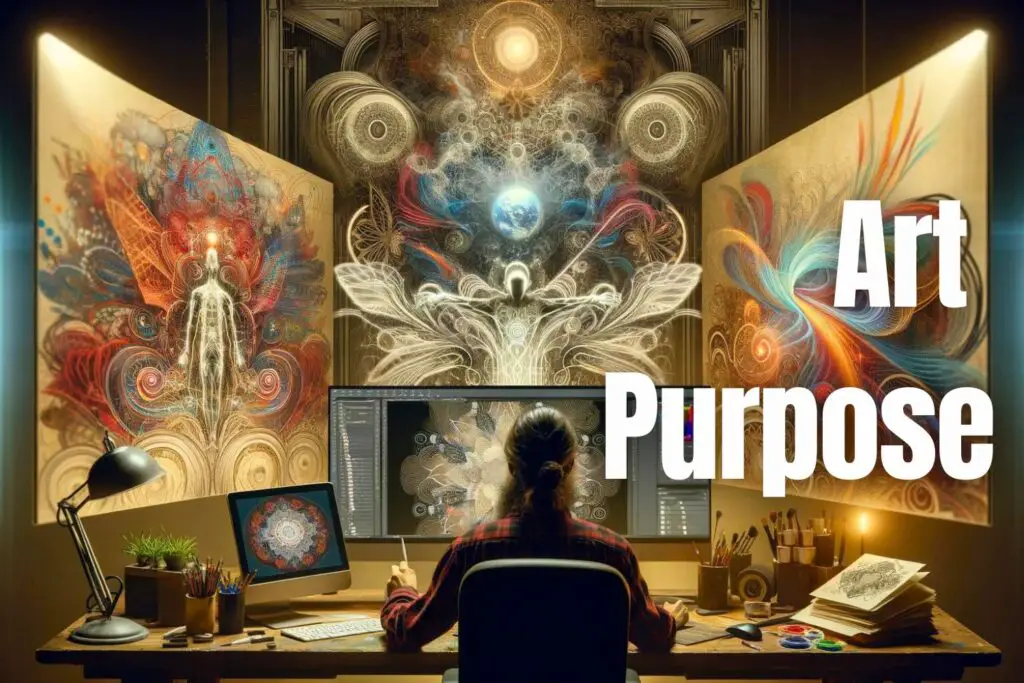Beyond wall decoration or status commodity, creative works’ allure taps the deepest recesses of human yearning for meaning, beauty, shared experience, emotional resonance, and progress. Even if museums seem staid or incomprehensible, the artistic impulse permeates popular culture and public spaces as universal acts of imaginative problem-solving, societal mirroring, and projecting their dreams onto the collective psyche.
Exploring why that song lyric haunts your psyche, the gravity behind a viral photograph, or the ambition fueling towering cathedrals and political performance art unveils art’s entanglement with personal exploration and social evolution. Whether you make art, study it, or feel that inexplicable pull, uncovering diverse cross-cultural and historical perspectives on the purposes of creative works spotlight your role in this compelling legacy.
Appreciating art’s diverse functions and impacts can enrich our understanding of art and what it means to be human.
Table of Contents
What is the True Purpose of Art?
The primary purpose of art is to convey messages, express emotions, and explore the human experience creatively. Art serves many interrelated functions that provide personal, social, and cultural value. These include the following:
Enhances Cultural Understanding:
Art preserves cultural heritage, conveys shared experiences, and promotes intercultural dialogue. Experiencing art from different cultures expands our worldview and helps overcome ethnocentrism. Public art also reflects and shapes the identity of communities. Overall, art facilitates cultural understanding on both personal and societal levels.
Promotes Emotional Expression and Healing:
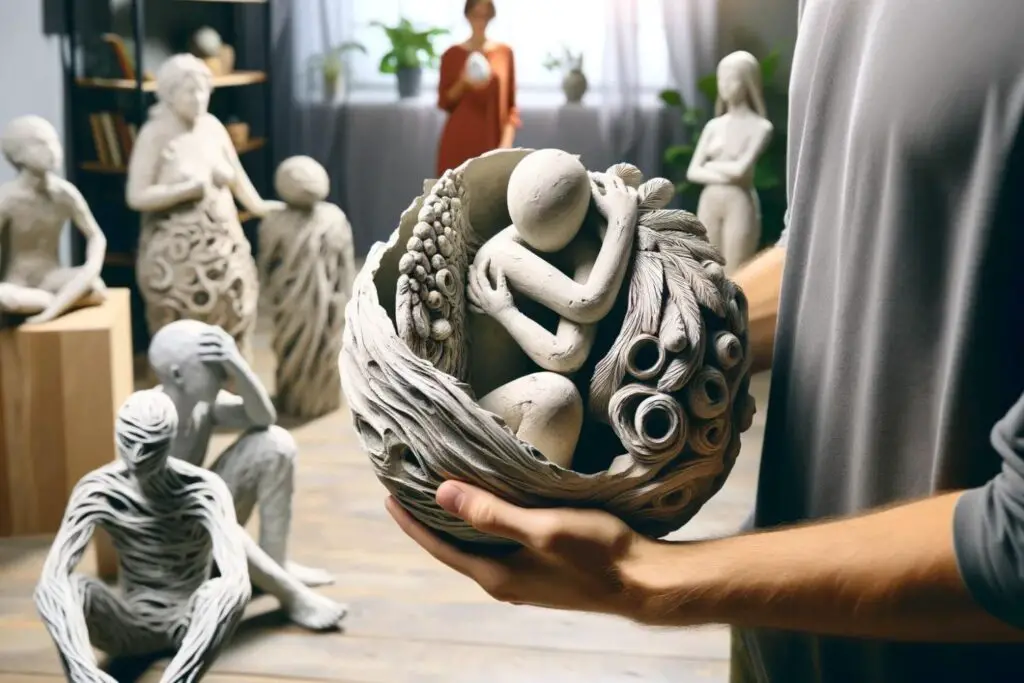
Creating and engaging with art allows for cathartic release, therapeutic processing, and externalization of inner worlds. Art provides a safer vessel for expressing vulnerabilities and challenging emotions. Studies show that art boosts mood, reduces stress and anxiety, and aids trauma recovery. On an individual level, art enables emotional health and resilience.
Stimulates Creative Thinking and Innovation:
Art cultivates flexibility, originality, and inventiveness in thought. The creative process of artmaking activates imaginative problem-solving and divergent thinking. Artists experiment with forms, techniques, and interpretations that can lead to innovation. Societally, art drives progress in culture and technology. Art education also promotes crucial 21st-century skills.
Beautifies and Enriches Environments:
Art introduces aesthetics, symbolism, and meaning into spaces and architecture. Public art, museums, and galleries beautify communities and provide inspiration and joy. Studies reveal that environments incorporating art or views of nature promote well-being. Creatively embellished places strengthen cultural identity and foster harmony between society and landscape.
Encourages Social Engagement and Dialogue:
Art builds community bonds by providing shared activities and conversational bridges. Public and participatory art facilitates collective experiences and cultural diplomacy. Exhibiting art creates forums for exchange and debate on societal issues. Shared meaning-making around art enables connections despite differences.
Preserves and Celebrates History and Traditions:
Art captures snapshots of culture across eras. Masterworks endure as touchstones of civilizations, commemorating people, events, and daily life throughout history. Folk art and craftwork embody generational customs and ethnographic diversity. In sum, art tangibly conveys mankind’s evolution, continuing age-old traditions while pioneering new frontiers.
Fosters Personal Growth and Self-Understanding:
Exploring art assists in identity formation, value clarification, and developing self-awareness. It provides perspective into the complexities of human nature and the diversity of life experiences. Engaging personally through art aids in overcoming obstacles, reframing narratives, and progressing toward self-actualization.
What is the Function of Visual Art?
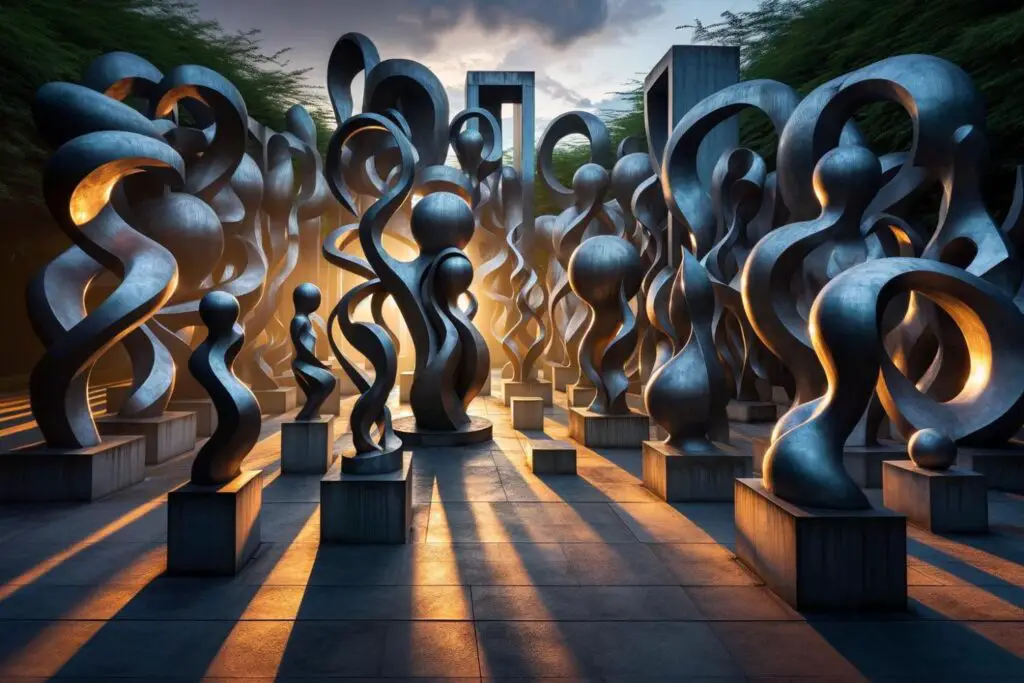
The primary function of visual art is to convey meaning and express ideas through the intentional arrangement of visual elements and principles of design. It is a visual language for communicating concepts that words cannot capture. Visual art enables artists and viewers to externalize inner worlds of emotion, imagination, and subjective experience through various media, such as painting, sculpture, photography, etc.
It documents history, environment, and culture and tackles complex themes. Visual art beautifies spaces, inspires critical dialogue and promotes cultural understanding across diversity. Engaging with visual art fosters creativity, self-awareness and community belonging. Visual art gives a tangible form to human creativity, vision, and purposeful communication.
How do Different forms of Visual Art fulfill their purpose?
Each visual art medium fulfills artistic purposes through its unique formal qualities, materials, and techniques. For instance, painting externalizes emotion through color, texture, and gestural brushwork on a tactile surface. Photography mechanically captures reality, documenting history and telling stories through the framed lens. Sculpture makes symbolic meaning tangible in three-dimensional form.
Printmaking diffuses multiples of an original composition, resonating through repetition. Conceptual forms like installation and performance art immerse us in interactive environments and fleeting experiences that activate all our senses. While definitions and boundaries between art genres intermix, the innate properties of every medium shape its expressive and communicative capacity. Understanding how form affects function allows artists and audiences to purposefully leverage a visual language.
How do the elements of art contribute to the purpose of an artwork?
The universal art elements like line, shape, color, value, texture, space, and form comprise the essential building blocks for manifesting purpose through visual art. The line creates contour, outlines ideas, and directs the viewer’s eye with implicit meaning. Shape and form depict figures, encapsulate volume, and provide visual weight and balance.
Color communicates ideas and emotions through cultural symbolism and the psychological effects of hues. Shading gives an illusion of three-dimensionality and defines edges. Texture adds physical surface interest and perceived tactility. Positive and negative spaces carve out areas for focal points.
Working in harmony, these basic ingredients allow artists to compose images that serve desired functions, from realistic documentation to symbolic abstraction. Understanding elements strengthens artistic intention when crafting imagery and expands one’s visual literacy when interpreting meaning.
How do the principles of art shape the purpose and meaning of an artwork?
Fundamental art principles govern how artists arrange the elements, impacting an artwork’s ability to fulfill its intended aims. Unity promotes cohesion toward clear communication, while variety adds visual interest. Emphasis directs attention toward subjects of significance. Balance lends stability and grace to a composition, while contrast spices up dynamics.
Movement guides the viewer’s path through the frame with purposeful rhythm and flow. Proportion scales elements appropriately, elevating focal points. Patterns echo motifs and produce harmonious flows. These and other principles form an artist’s toolkit for compositing intentionally.
Adept use of principles allows space for expressiveness and serendipity within creative choices. Their interplay enables artistic problem-solving toward purposeful outcomes. Understanding design principles reveals how formal decisions shape meaning when creating or interpreting art.
How Does Art Influence Society?
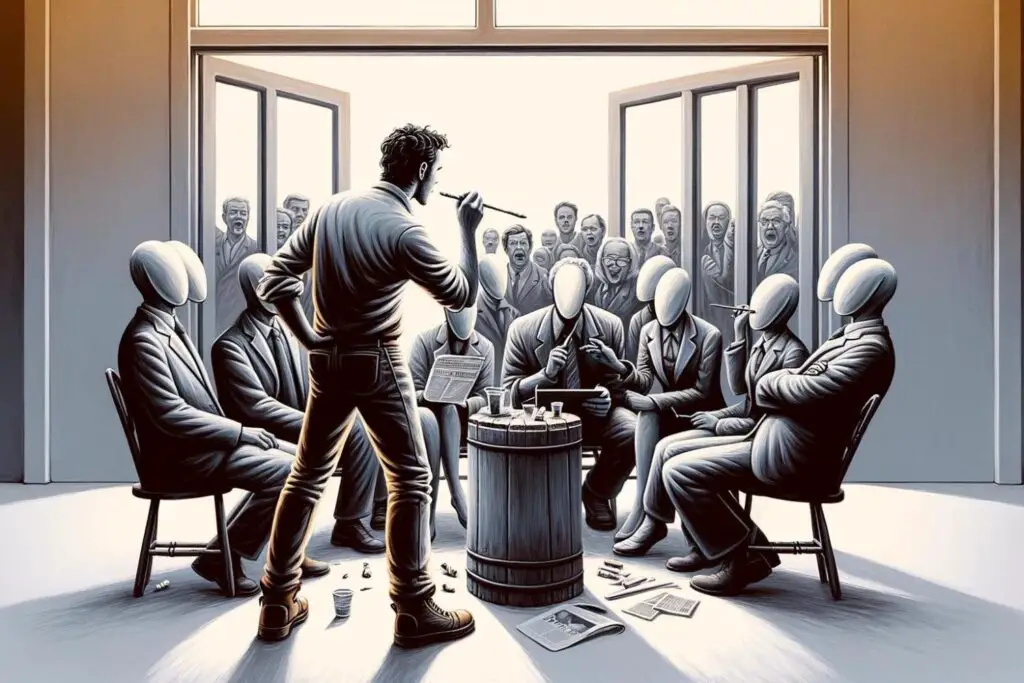
Art influences society by reflecting and shaping cultural values, driving social change, and contributing to political perspectives. Much artwork has affirmed cultural norms yet also countered more by advancing inclusion and progressivism.
For example, Impressionism defied realist conventions with modern aesthetics, while Abstract Art questioned assumptions. Activist art aims to expand consciousness and foster reflection on critical issues. Through campaigns and public art, art can mobilize collective efforts toward causes like equality.
Spotlighting marginalized narratives builds empathy and inclusion. Creative engagement encourages questioning, dialogue, and solidarity around shared goals for a better society. Art speaks truth to power, memorializes events, and provides symbols that rally political movements. Engaging art pushes culture incrementally toward new frontiers.
In what ways can art impact cultural values?
Art subtly influences cultural values by reflecting societal perspectives and proposing alternative paradigms. Much artwork has affirmed cultural norms throughout history. Egyptian tomb frescoes, for example, advanced ideals of an orderly civilization governed by divine monarchs. Renaissance oil painting uplifted Catholic iconography and humanist individualism.
Yet art has also countered more by advancing pluralism, inclusion, and progressivism. Impressionism defied realist conventions by capturing ephemeral light effects and modern dynamics. Abstract art questioned assumptions by conveying emotions purely through color and form.
Generally, art assimilates cultural beliefs intuitively while pioneering new possibilities. In this sense, much activist art aims to expand consciousness and foster reflection. Ultimately, exposure to diverse representations through art pushes culture incrementally toward new frontiers.
How does art contribute to social change?
Art drives social change by raising awareness of critical issues, rallying collective activism, and empowering disenfranchised voices. Nuanced artistic interpretations of complex challenges can inspire public discourse and policy shifts. Multi-media campaigns and guerilla art projects mobilize efforts toward causes like environmentalism, equality, or political reform.
Public art, street performance, and community creative placemaking induce participation toward local change. Many artists highlight marginalized narratives, building empathy and inclusion for vulnerable groups. Photos documenting injustice or plays voicing generational trauma bring human dimensions to social problems. Creative engagement encourages questioning, dialogue, and solidarity around shared goals for a better society.
Can art play a role in shaping political views?
Art contributes to personal and collective political perspectives by provoking conscience, speaking truth to power, memorializing events, and providing rallying symbols.
Creative dissent encourages critical thinking about authority, policies, and partisan divides. Banned paintings, censored performances, and confiscated artworks shed light on oppression. Iconic photographs like Thích Quảng Đức’s self-immolation denouncing persecution seared pivotal moments into public memory.
Feminist art overturned silence around gender violence and pay gaps by depicting lived suffering. Murals immortalizing victims visualize communal trauma while inspiring hope. Similarly, public sculptures honoring civil rights leaders cement symbolic change. Political art remains pivotal for questioning domination, mobilizing movements, and progressing freedom.
What Role Does Art Play in Personal Development?
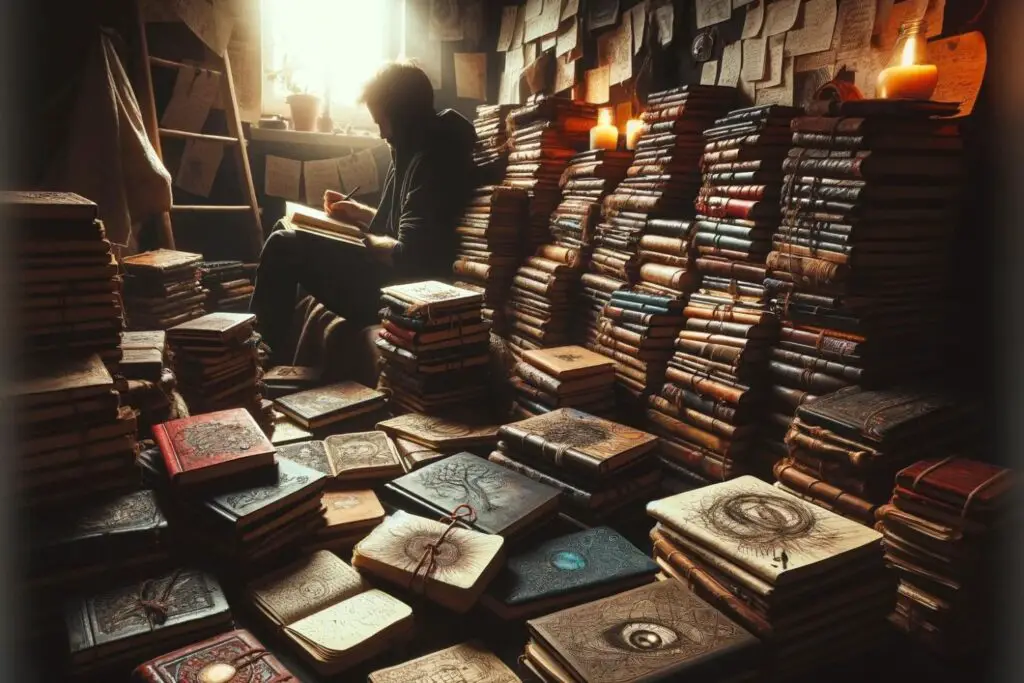
Engaging in art cultivates personal creativity, self-awareness, and emotional intelligence and provides a constructive outlet for self-expression. The imaginative thinking and problem-solving utilized when making art strengthen flexibility, originality, and innovation capacities valuable beyond the studio.
Representing inner worlds externally through visual journaling, music, poetry, or dance fosters an understanding of one’s subjective experiences and relationships. Such arts therapy processes voice thoughts and feelings, allowing healthy processing. Art activities model life skills, aid identity development, and actualize full human potential.
Passionately collecting specific artworks signals prestige and personal aesthetics to others. Identifying as an abstract painter vs. pop artist vs. poet signals values. Overall, art participation builds self-knowledge, mirrors growth and connects self-concepts to wider humanity.
How does art affect individual creativity and self-expression?
Engaging in art cultivates personal creativity, self-awareness, and emotional intelligence and provides a constructive outlet for self-expression. The imaginative thinking and problem-solving utilized when making art strengthen flexibility, originality, and innovation capacities valuable beyond the studio. Focused creative practice builds perseverance, resilience, and complexity management.
Representing inner worlds externally through visual journaling, music, poetry, or dance fosters an understanding of one’s subjective experiences and relationships. Such arts therapy processes voice thoughts and feelings, allowing healthy processing. Art activities model life skills, aid in identity development, and actualize full human potential. A creative practice nurtures personal growth.
Can engaging with art improve mental health?
Substantial research confirms visual artmaking and experiencing visual art improves mental health, processing trauma, easing stress, anxiety and depression while boosting life satisfaction.
The beneficial outcomes result from art’s abilities for non-verbal expression of emotions, externalizing inner distress, relaxation during flow states and building self-efficacy. Clinical art therapy utilizes visual communication, symbolic abstraction, and artistic self-expression to heal individuals struggling with mental illness or painful memories.
Community art participation channels social belonging and joy. Even viewing art in museums lowered cortisol levels and elevated mood in studies, evidencing art’s wellness benefits. Engaging in visual culture frequently aids coping, meaning-making, and inspirational clarity.
Is there a connection between art and personal identity formation?
Interacting with art significantly impacts personal identity formation and values development, influencing worldviews that shape life trajectories. Viewing diverse representations deepens cultural perspectives, potentially reducing prejudice. Studying art history links individuals across generations through shared heritage. Public response to controversial artworks defines community standards. Creative mentors model paths forward.
Making intensely personal art externalizes self-concepts, channeling self-actualization. Passionately collecting specific artworks signals prestige and personal aesthetics to others. Identifying as an abstract painter vs. pop artist vs. poet signals values. Overall, art participation builds self-knowledge, mirrors growth and connects self-concepts to wider humanity through time and culture. Engaging art helps contextualize identity.
How is Art Used in Education and Learning?
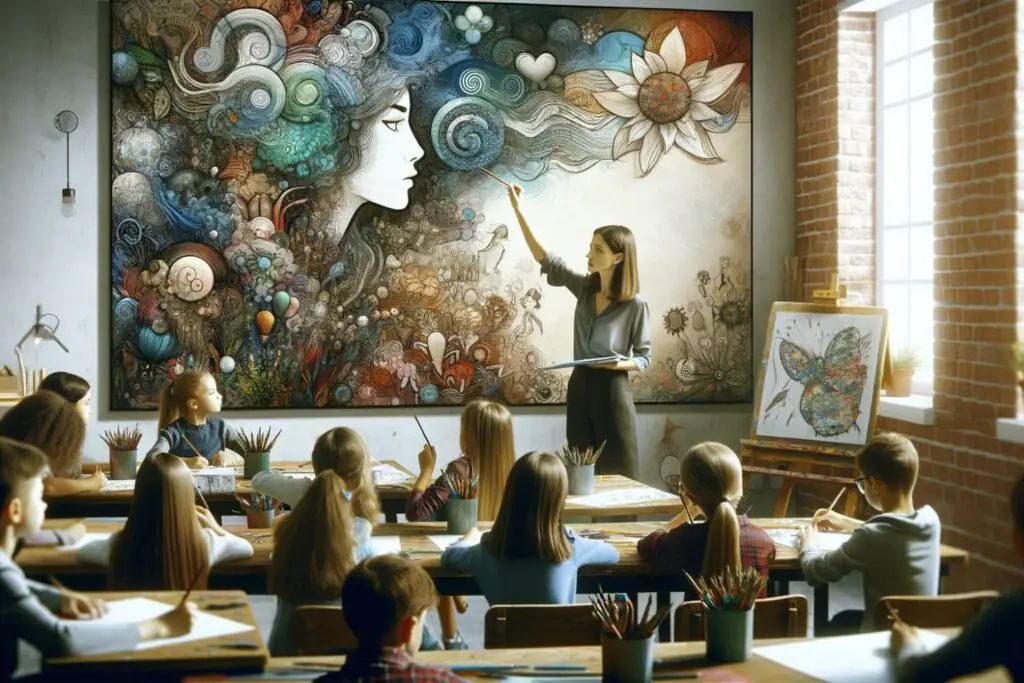
Art is used in education and learning in various ways to enhance cognitive, emotional, and creative development in students of all ages.
Interweaving art across curriculum magnifies the resonance and retention of academic concepts revealed memorably through stimulating multimedia methods. Students internalize abstract ideas effectively when anchored to relatable visual symbols, role-played scenarios, tactile diagrams or rhyming songs.
Contextualizing dry historical facts or scientific notions through fine art analysis enlivens sociocultural significance. Investigating mathematical fundamentals like ratios and geometry via architectural drawings or music compositions grounds theoretical principles experientially.
Guiding biology students to scientifically illustrate diverse organisms transforms perceptions through detailed looking. Overall, incorporating arts when teaching any subject theme boosts immersive engagement, forging sensory memories and intuitive grasp. Creativity sparks revelation.
What is the role of art in early childhood education?
Developmental research confirms arts integration in early childhood curriculum promotes crucial cognitive, emotional, sensory, and motor skill growth, enriching futures. Between ages 3-8, young brains rapidly forge neurological pathways and neural connections. Exposure to visual arts, dance, theater, and music builds visual-spatial processing, focus, planning sequential actions, and controlling impulses with physical balance and coordination.
Creative activities also teach flexible thinking, problem identification and imaginative idea generation. Representing thoughts visually assists communication skills. Emotionally, dramatic play fosters empathy, conflict resolution and resilience. Joyfully experimenting with varied materials in an encouraging environment expands sensory awareness and self-confidence. In sum, arts nourish children holistically.
How does art enhance critical thinking and problem-solving skills?
Art intrinsically activates critical analysis, evaluative thinking, strategic goal-setting, and creative problem-solving through hands-on experimentation, iterative feedback, and risk-taking required while mastering techniques. Developing artistic competencies in drawing, musical instruments, or acting demands focused inquiry, assessing current skills against standards, and pinpointing knowledge gaps.
Achieving creative visions obligates assessing options, predicting outcomes, persistence despite failure, and compromising idealism for pragmatic solutions. Transferably, these cognitive aptitudes aid in tackling academic studies, navigating workplace dynamics, and resolving life challenges ingeniously. Educational arts courses hone valued inventive, logical and practical intelligence applicable across disciplines.
Can art be used effectively in interdisciplinary learning?
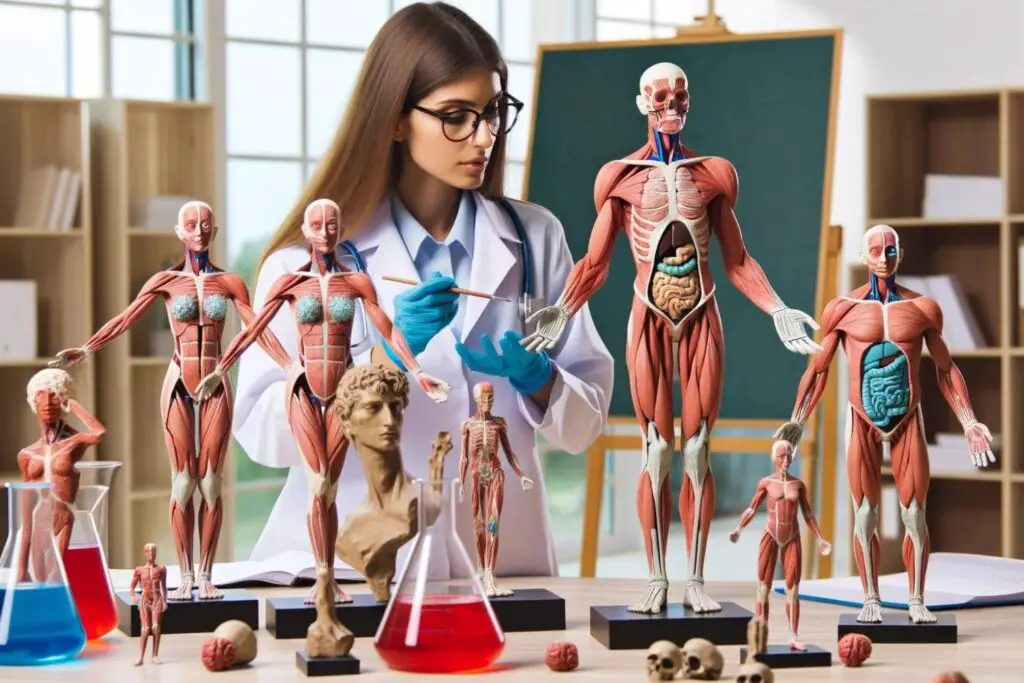
Interweaving art across curriculum magnifies the resonance and retention of academic concepts revealed memorably through stimulating multimedia methods. Students internalize abstract ideas effectively when anchored to relatable visual symbols, role-played scenarios, tactile diagrams or rhyming songs. Contextualizing dry historical facts or scientific notions through fine art analysis enlivens sociocultural significance.
Investigating mathematical fundamentals like ratios and geometry via architectural drawings or music compositions grounds theoretical principles experientially. Guiding biology students to scientifically illustrate diverse organisms transforms perceptions through detailed looking. Overall, incorporating arts when teaching any subject theme boosts immersive engagement, forging sensory memories and intuitive grasp. Creativity sparks revelation.
How does art’s societal, personal, and educational impact interconnect to define its overall purpose?
Art’s capacity for imparting cultural continuity, progressing empathetic society, enabling self-actualization, and driving human intellectual achievement cannot be isolated since personal, public, and pedagogical creative purposefulness all feed cyclic synergy. Flourishing educational arts programs prepare generations to appreciate aesthetic innovations, hungry to responsibly shatter perceived limitations. Schools valuing arts inspire radical thinkers.
Graduates seek out diverse creative communities upholding progressive standards, collaborating, finding purpose and belonging in art. Such networks elevate collective consciousness, often challenging exclusionary paradigms through impactful projects. Participants feel empowered as change-makers, creatively facilitating a more utopian culture benefitting all identities. Fulfilled citizens inherently actualize their highest potential, modeling human virtues via artistic contributions. Ultimately, art’s higher purposes uplift universal humanity.
What is the historical evolution of the purpose of art?
The perceived purpose driving artistic creativity evolves across history, corresponding to a society’s relative needs for spiritual inspiration, ideological persuasion, cultural recording, political commentary, disruptive ambiguity, or universal human connection. Ancient civilizations created codified symbolic art exclusively for ritual contexts directed toward cosmic deities. Middle-era patrons commissioned art propagating social values and affirming political rulers.
Later ruptures like modernism and postmodernism prized radical individualism, intentional obfuscation and conceptual philosophies as fine art flooded public life, its disruptiveness and complexity indicating cultural progress. Globalization and digital democratization continue broadening creative participation and erasing hegemonic gatekeeping. Resultantly, art’s necessity for individually processing this complex world increases. Purpose lies in sustaining humanity’s mental health.
How do different cultures perceive the purpose of art?
Art serves diverse and multifaceted sociocultural functions worldwide, with varied art forms arising from regionally distinct environments, belief systems, values, and aesthetic priorities that mold civilizations differently. Ritual artifacts embody spiritual narratives. Decorative architectural ornamentation proclaims cultural virtues. Storytelling epics impart shared heritage. Public amateur creativity forges collective memory.
Differing cultural paradigms yield art emphasizing harmony, order, and traditional technique or promoting futurist progress, defiant activism, and pluralism. Western notions of fine art for personal cultivation and cultural elevation contrast perspectives treasuring artisan making preserving cultural heritage or folk practices transmitting wisdom for communal benefit. Examining art across indigenous tribes, ancient kingdoms and contemporary developing scenes reveals an array of creative purposes.
In what ways has modern technology influenced the purpose and creation of art?
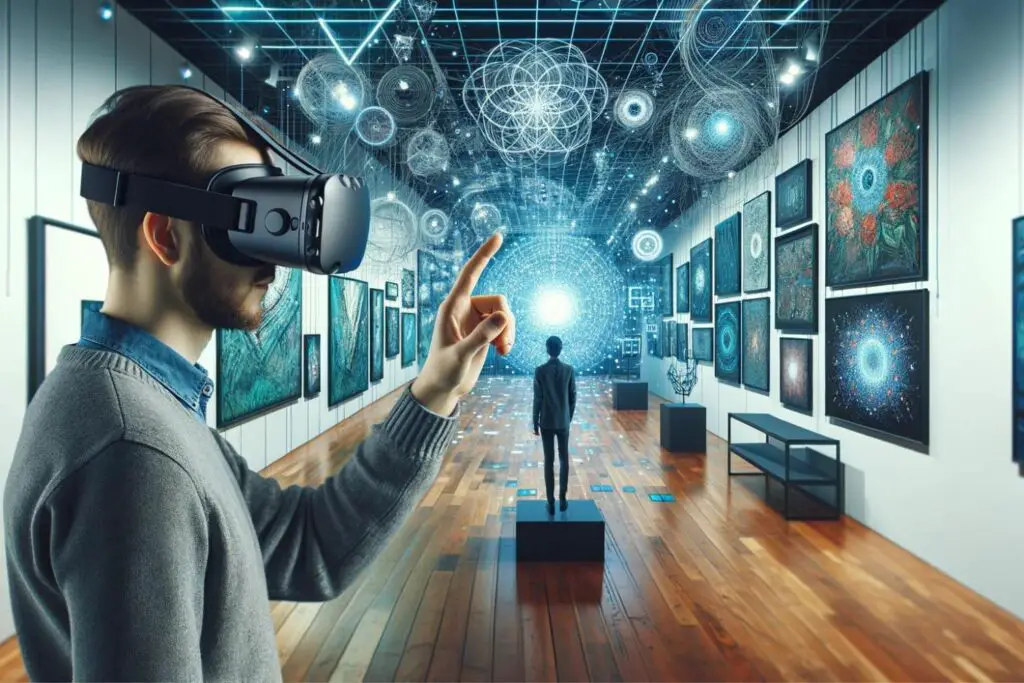
Accelerating technological progress expands artistic possibilities regarding multimedia hybrid formats, interactive viewer experiences, global digital connectivity, and artificial intelligence-inspired explorations while elevating art’s capacities for catalyzing conversations.
Artists utilizing video, sensors, and code in installation artworks immerse audiences collaboratively within responsive environments tackling complex themes like climate crises, refugee displacement stories, or queer experiences involving participants ethically. Online movements erase geographic constraints, allowing underrepresented voices visibility, inspiring amateurs’ technical skills, and digital community support toward artistic actualization.
Open-access image banks supply combinatorial fodder for appropriation, remixes, and reflection on media saturation. Overall, art technology facilitates timely cultural criticism, boosts inclusive participation, and makes a transparent creative process prioritizing idea exchange progress over artifacts.
How Does Understanding the Purpose of Art Enrich Our Appreciation and Creation of Artistic Works?
Grasping diverse lenses into art’s potential societal, personal, and historical purposes enlivens appreciating masterworks and crafting meaningful originals via layered context, empathetic connection to artistic visions, and freed technical play. Academically reviewing photography’s documentary capacity recalls how selected moments sculpt cultural memory, revealing sociopolitical influences on image treasuring. Philosophically pondering abstract art’s aims for emotional resonance without legible narrative prompts a re-examination of biases toward technical polish, representational clarity, or conformity-affirmation when judging impactful creativity.
Learning architectural uses for math harmonics inspires interdisciplinary translation, weaving personal poetic themes into structural drawings. Ultimately, penetrating varied artistic purposes dispels limiting assumptions, complexes, or hierarchical comparisons, often psychologically obstructing full creative liberation and work joy.
Conclusion
In summary, art informs the human condition across time and culture through diverse creative means and wide-ranging ends, from preserving collective memory to progressing social equity, stimulating individual growth, and anchoring education. Form, function and interpretation remain perpetually entwined.
Expanding perspectives on how art permeates existence reveals humanity’s deeper interconnectedness. May a broad survey of artistic purposes resonate, sparking personal journeys further illuminated by creative engagement. What inspirations echo loudest in your soul? Which artists, living or legendary, amplify your vision? However small, begin building the reality wished for. Manifest purpose. Create fearlessly.

